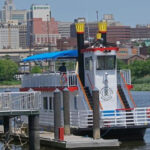Niagara Street in Buffalo, New York, underwent a significant redesign, prioritizing accessibility, safety, and vibrancy for residents, visitors, and businesses alike. Spearheaded by Watts Architecture and Engineering, with the University at Buffalo Regional Institute (UBRI) leading community engagement, the Niagara Street Now project addressed a crucial 3-mile stretch from Porter Avenue to Ontario Street. This ambitious undertaking represents the City of Buffalo’s most extensive streetscape redesign in a single project, emphasizing inclusive and innovative engagement strategies to capture the diverse voices along the corridor.
Central to the project’s success was UBRI’s meticulous approach to community engagement. Recognizing the importance of local insights, UBRI initiated a stakeholder group comprising over 50 organizations, including non-profits, businesses, and neighborhood associations. This collaborative network extended outreach efforts into adjacent neighborhoods, ensuring a broad spectrum of perspectives were considered. To facilitate continuous communication and information sharing, a comprehensive website was developed, acting as a central hub for project updates and engagement opportunities.
Further deepening community understanding, a door-to-door survey was conducted along Niagara Street. Utilizing geographic information systems and tablet technology, the survey effectively gathered feedback from every business owner and resident. Acknowledging the multicultural fabric of the neighborhoods along the corridor, the survey was thoughtfully translated into the seven most prevalent languages spoken on Buffalo’s West Side, ensuring inclusivity and maximizing participation.
Culminating the engagement phase, a series of interactive workshops were organized, inviting the wider community to geographically review survey findings and collaboratively discuss design solutions for key areas along Niagara Street. By synthesizing this wealth of public input, UBRI developed a comprehensive vision document. This document effectively encapsulates the community’s expressed concerns, priorities, and values, directly informing the landscape architects in their streetscape design process. The Niagara Street redesign project, therefore, stands as a testament to the power of community-driven urban revitalization, with Niagara Street poised to become a more accessible, safer, and vibrant corridor for all who use it.

